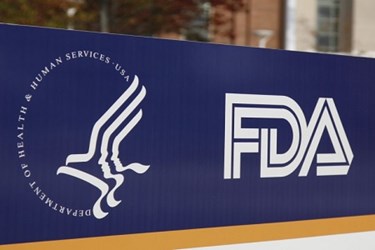Restaurant And Hospitality News – September 21, 2015

By Christine Kern, contributing writer

FDA Publishes Menu-Labeling Draft Guidance
The Food and Drug Administration (FDA) has issued new draft guidance for menu-labeling rules that will affect chains with 20 or more units, according to the Nation’s Restaurant News. The new requirements mean that those chains must provide calorie counts on permanent menu items beginning December 1, 2016. The menu-labeling rules were required as part of the 2010 Patient Protection and Affordable Care Act and apply to any chain that sells restaurant-style food, including movie theaters, bowling alleys, amusement parks, and grocery stores. They do not apply to temporary menu items, small chains, schools, hospital patient cafeterias, food trucks, or food carts. Calorie counts must be listed next to the item on the menu, or the price, in a font at least the same size as the price or the item. “As a result of these efforts, consumers will have ready access to calorie information they currently may not have to help them make healthy decisions,” Dr. Susan Mayne, director of the Center for Food Safety and Applied Nutrition, said in a statement. “That’s a worthy outcome of which we can all be proud.” The FDA is welcoming comments on the draft guidance before it is finalized. Many chains, including Starbucks, McDonald’s, and Panera Bread, have already begun implementing the labeling requirements in anticipation of the new rules.
New nSight Hotel Guide Provides Goal-Based Tips for 2016 Budgets
nSight, the leader in online consumer shopping intelligence for hotels and destinations, has released its new eBook offering tips for budgeting for business intelligence tools in 2016. The guide helps hoteliers plan and budget for 2016 in response to the ever-changing consumer environment by understanding and targeting customers more proactively and effectively than their competition. According to nSight, hotels need to find ways to reconnect with today’s travelers with a new forward-looking perspective that transcends traditional boundaries of performance. As hotel business intelligence requirements have changed, hotels need to realign their BI budgets to meet their business goals. To download the full eBook, click here.
Restaurant Same-Store Sales Decelerated In August
The Nation’s Restaurant News reported that restaurant sales dropped in August, hitting their lowest level in a year, as a result of declines of both quick-service and casual-dining restaurant diners, according to the latest MillerPulse survey. Traffic fell 0.9 percent, the lowest level since April 2014. Larry Miller, co-founder of the survey, stated, “It was a bit of a reversal in August,” coming after two months of growth, despite lower gas prices and rising employment figures, “But it’s nothing I’m particularly worried about.” One of the largest factors in the August slowdown was the calendar, with Labor Day falling late this year. This likely reduced some restaurant traffic, causing late August sales to slump. Miller believes that sales should rebound when September figures are released. Miller also stated that the industry is beginning to hit tougher comparisons, which are “taking toll on sales.” Another important factor in slumping sales may be that consumers are hitting the wall when it comes to shelling out more cash for meals. Miller said, “The consumer has said the past several months that they’re willing to spend more money when they go out. Now we’re starting to see the first chink in the armor. They may be pulling back at the margins.”
Hotels are Now Catering To Business Travelers in emerging Tech Cities
This article from Hospitality Net examines how some hotels are changing the way they cater to their business clients, particularly in emerging Tech cities. As mobile technology is becoming part of the daily experience for most travelers, hoteliers must respond to changing needs of their prospective guests. As the article points out, in cities like Chicago, Austin, and Miami, hotels are on the cutting edge of adopting technology aimed at helping business travelers make the most of their stays. From unlimited band width Wi-Fi, to tablet-based technology, travelers in Chicago find technology that lets them work hard and fast. In Miami, hotels are also setting trends in technology, with 20-inch iMac computers in every room at the Fontainebleau Miami Beach hotel, or iPads at the hotel Beaux Arts Miami. And in Austin, where technology is part of the culture, hotels are also stepping up the game. With mobile apps for check in and room updates, wireless charging stations in the lobbies, and a new Four Seasons concierge app, guests are finding technology that makes their stays just a bit easier.
